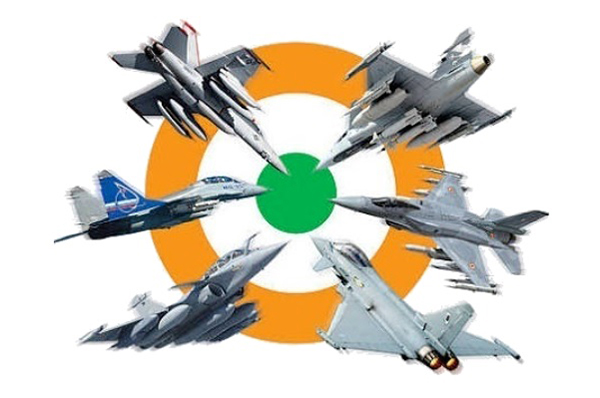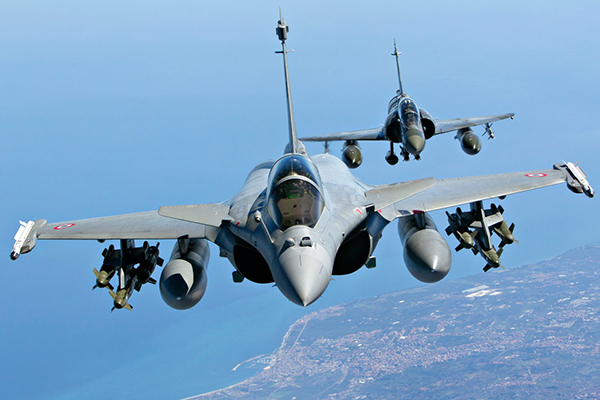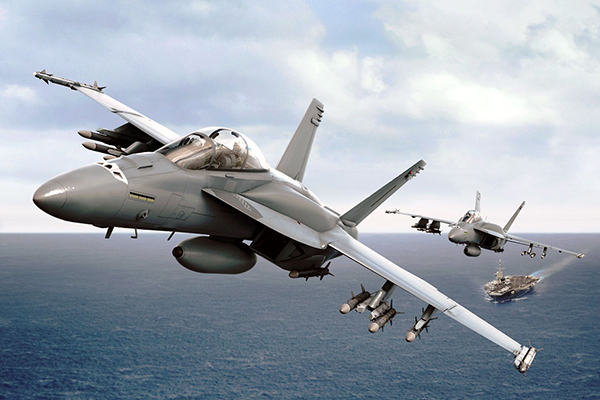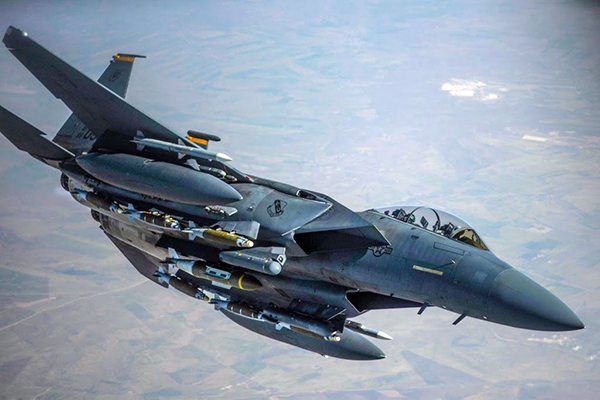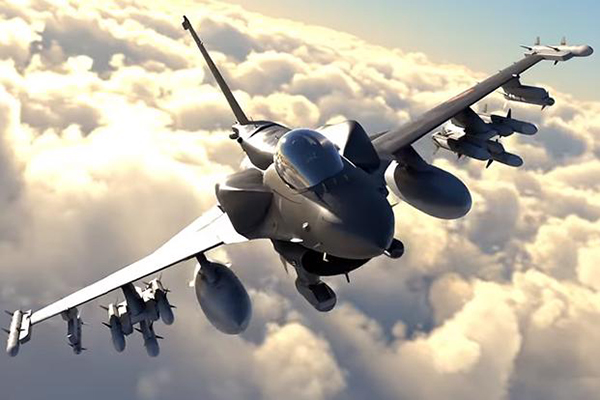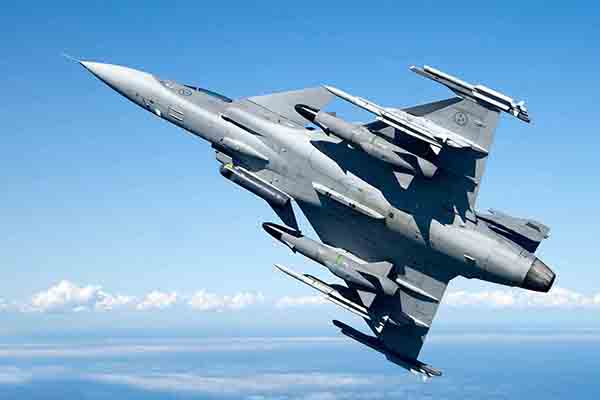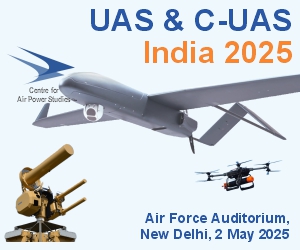Multirole Fighter Aircraft Acquisition
The Indian Air Force has plans of acquiring 114 Multirole Fighter Aircraft (MRFA) under ‘Buy Global and Make in India’ scheme under which Indian companies would be allowed to partner with a foreign vendor. The Indian Air Force has to rely heavily on these 114 fighter jets for maintaining its superiority over the neighboring rivals Pakistan and China.
Amid a big push for the Aatmanirbhar Bharat scheme by the PM Narendra Modi-led government, the Indian Air Force is planning to acquire 114 fighter jets of which 96 would be built in India, and rest 18 would be imported from the foreign vendor chosen for the project.
As per the plan, after the initial 18 aircraft are imported, the next 36 aircraft would be manufactured within the country and the payments would be made partially in foreign currency and Indian currency. The last 60 aircraft would be the main responsibility of the Indian partner and the government would make payments only in Indian currency. The payment in Indian currency would help the vendors to achieve the over 60 per cent ‘Make-in-India’ content in the project.
Boeing’s F-15EX and F/A-18 Block III Super Hornet, Saab’s JAS-39 Gripen, Lockheed Martin’s F-21 and Dassault Aviation’s Rafale are expected to participate in the tender. Of these, the F 21 and Gripen are single-engine aircraft, while the rest are twin-engines. While the single-engine fighters are cheaper, it is not known whether that will be a consideration for the IAF acquisition.
Interim Plans
The 36 Rafale aircraft procured under emergency orders helped immensely in maintaining an edge over the Chinese during the Ladakh crisis which started in 2020 but the numbers are not enough and more such capability would be required by it. The IAF is highly satisfied with the operational availability of the Rafale fighter jets and wants similar capability in its future aircraft.
The IAF has already placed orders for 83 of the LCA Mk 1A aircraft but it still requires a higher number of capable aircraft as a large number of MiG series planes have either been phased out or are on their last legs.
The fifth-generation Advanced Medium Combat Aircraft project is moving ahead at a satisfactory pace but it will take a lot of time to be able to be inducted in an operational role.
The IAF is also looking for a cost-effective solution for its fighter jet requirement as it wants a plane that is low on operational cost and gives more capability to the service.
Rafale
The main contender is the Rafale fighter which the IAF is already accustomed to, since 36 of these fighters, bought under a 2016 government to government deal and costing Euro 7.8 billion — are already in use by the IAF.
Known as an omnirole aircraft — one which can conduct complex combat assignments, including ground attacks, beyond visual range (BVR) air-to-air combats or interceptions, during the same sortie — the Rafale fighter is a ‘4.5 generation aircraft’, with a top speed of 1.8 Mach, nearly double the speed of sound.
It is the most potent aircraft currently in use by the IAF, in terms of range, radar and weaponry.
The Rafale is a twin-engine, canard-delta wing, multi-role fighter aircraft, fit for varied purposes, such as reconnaissance, providing ground support to troops, in-depth strikes, and anti-ship strikes.
The Rafale has a ferry range of 3,700 km and is equipped with internal and external fuel tanks. In terms of weaponry, the Rafale has 14 hard points to carry different types of missiles, including the the Meteor air-to-air missiles — which come with a Beyond Visual Range (BVR) of about 150 KMs and the deadly air to surface Scalp which has a range of over 500 KMs.
The Rafale has been used by the French Air Force in multiple campaigns across Afghanistan, Libya, Mali, the Central African Republic, Iraq and Syria.
F/A-18 Block III Super Hornet
Recently featured in the superhit Hollywood film Top Gun: Maverick — which shows actor Tom Cruise manoeuvering the craft to evade enemy’s surface-to-air missiles whilst fulfilling a seemingly impossible mission — the F/A-18 Bock III Super Hornet is being touted as a “game-changer” for Indian military, if acquired.
The F/A-18 has been the leading aircraft for the US Navy for nearly four decades. It is designed as both a fighter and attack aircraft and Block III is its latest version. Currently, the US Navy has over 700 F/A-18s, which are operational worldwide. The original Block I Hornet was introduced into service in 1984.
The version under consideration by the IAF— the F/A-18 Block III Super Hornet — is a twin-engine, carrier-capable, multirole fighter aircraft.
Block III comes in two versions, the F/A-18 E which is a single-seater and the double-seater F/A-18 F. Both versions have been built for high-loading and high-stress operations.
A major upgrade in the Block III, from the earlier F/A-18, is its “advanced cockpit system”, which is operated via a customisable 10×19-inch touch screen. Essentially, this system has replaced hard displays in the cockpit with iPad-like features. This enables smoother flight operations and decision-making, giving the pilot more time to assess the battlefield.
Further, to store weapons, Block III has an “enclosed, external weapons pod built to carry up to 2,500-pounds of weapons”. From the pod, various missiles and bombs can be fired, which include the “AIM 9X Sidewinder air-to-air missile, the AIM 120 Advanced Medium-Range Air-to-Air Missile (AMRAAM), the AGM-154 Joint Standoff Weapon (an air-to-ground missile), the Small Diameter Bomb and the Mark-84 bomb, among others”.
Block III has a life of approximately 10,000 flying hours. However, the drawback is that the F/A-18s lack stealth capabilities.
Boeing is waiting for the IAF to come out with its technical requirements before deciding whether they will offer the Super Hornet or the F-15 EX.
F-15 EX
The F-15 EX is the upgraded replacement of the F-15C. It is referred to as the “Eagle-II”. The F-15 EX is also developed by Boeing and is another contender from their portfolio for the MRFA.
The original F-15s were first deployed by the United States Air Force in the mid-1970s. Today’s version includes multiple upgrades and enhancements.
Specifically, the F-15EX includes enhancements to “manoeuvrability, acceleration, durability, computing power, and weapons carriage ability of the F-15C”.
According to Boeing, the F-15 EX “includes a best-in-class payload, range and speed”. Payload refers to the carrying capacity of a jet, including cargo, munitions, etc.
An article published in the Air Force Magazine claimed that the advanced specs of the Eagle-II entail “digital fly-by-wire flight controls, a large area display glass-cockpit, and an APG-82 AESA radar”.
Further, the F-15EX is built with an open mission system software, which allows the operating network of the fighters to undergo rapid upgrades and capability enhancements. Ensuring it is never outdated from the latest standards in the industry.
The Congressional Research Service (CRS), a public policy research institute of the US Congress, explains that the F-15EX have “stronger airframes, more powerful processors and advanced flight control systems” than any other fighter operated by the United States Air Force.
The F-15EX is capable of firing AMRAAM. The US Air National Guard conducted a successful firing of the AIM-120D AMRAAM from the F-15EX over the Gulf of Mexico in February 2022.
The F-15 EX also boasts a flying life of 20,000 hours, much longer than the average flying time of fighters, which ranges between 6,000-to 8,000 hours.
F-21
The F-21s are a product of the US defence conglomerate Lockheed Martin.
The F-21 is an adapted and advanced version of the F-16 and is specially tweaked by the manufacturer to cater to the needs of the IAF. The F-16 is commonly called the “Fighting Falcon”. However, the F-21 is a fighter on paper and has not been manufactured yet.
The F-21 has been touted as a multi-role fighter. From the original, the F-21 retains the nose-mounted radar fit, wide-view canopy, and a single-engine installation.
The F-21 comprises both single-seater and double-seater variants. It includes three underwing hardpoints (the area on an airframe that is used to carry external and internal load). Two of these hardpoints are for reserve fuel tanks, which can be used in case travel ranges increase.
Further, the F-21 also comes with wingtip missile hardpoints, which like the F-15EX support the AIM-20D AMRAAM. It also entails a triple launcher to fire these AMRAAM missiles.
The F-21 is equipped with a retractable fuel probe, an essential element for IAF fighters to ensure smooth fuelling at their bases.
Saab JAS-39 Gripen
The Saab JAS-39 Gripen is a light, single-engine, multirole fighter aircraft manufactured by Swedish aerospace and defence company, Saab AB.
It was introduced into the Swedish Air Force in 1996 and is described as an “affordable non-stealth aircraft”. According to an article published in The Express, UK, the Swedish Air Force currently operates between 1,000 to 2,000 of these fighters.
The JAS-39 was the first fighter to be loaded and capable of firing the Meteor air-to-air missile, a beyond visual range (BVR) weapon, capable of striking targets up to 150 kilometres.
Different variants of the Gripen can carry different loads of meteor missiles. The Gripen-C can carry four, whereas the Gripen E can carry seven.
Alluding to the modern operating system that the Gripen runs on, Saab’s website explains, “Gripen’s unique avionics architecture is the definition of smart. It means we can reconfigure the inside of Gripen without affecting the airframe. Or put another way, we can rapidly upgrade Gripen’s avionics whenever new technology becomes available.”
Beyond Sweden, the Gripen is currently operational in the Czech Republic, Hungary, South Africa, and Thailand.


